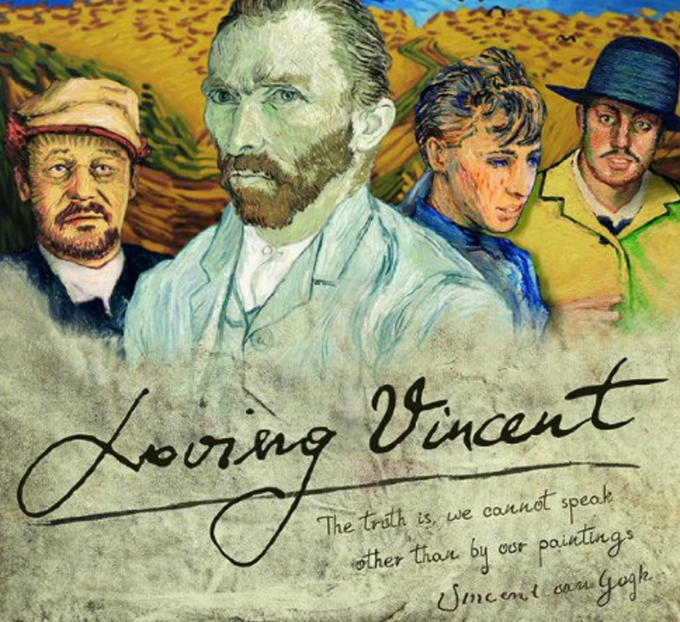OMG this movie. OMG!
Itís different and amazing! i am a huge lover of all things Van Gogh....What a labor of love this must have been to create! .
"Loving Vincent.Ē........
The story is well known - a matter of history. Vincent painted the portrait of Joseph Roulin, Postmaster of Arles. The film tells us the story of Vincent's life and last months before his death on 29 July, 1890 (aged 37) from a self-inflicted gun-shot wound, via the device of the postmaster's son being sent on a mission to deliver a letter from Vincent to his brother, which has been returned.
Technically the film "Loving Vincent" is a wonder of animation. One hundred artists in two countries, (Poland and Greece) working in Vincent's own style contributed full colour paintings for "the present" and black and white paintings for "the past" as the story is being told by the people who knew Vincent.
The film is made up of 853 'shots', and each one began with a first frame of a full painting on canvas board. As the animation photography was done in 12 frames per second, the first painting, would then be photographed, then painted over, with each gradual change to certain details or all of it, until the last frame of the shot. (This is in place of the use of animation cels, which could not be applied in this style of work.) At the end of the 'shot' the film-makers were left with an oil-painting on canvas board, of the last frame. So at the end of filming 853 paintings remained, and 200 are being auctioned off, and many have already sold, (as can be seen from the films own website) although at the time of writing the film has not yet premiered in the USA. The size of the works was usually 67cm by 49cm. Bear in mind that for one hour of film, 43,200 paintings were required, and you will begin to see the extraordinary ambition of this project. Additionally 90 design paintings were created in the planning stages during the year before shooting started. The purpose of these was to define the style in which the artists would all re-create Vincent's style of painting and make it move, live and breathe. 65,000 painted frames in oils were made for the whole film. The story moves along briskly and is full of wonderful characters (the people in Vincent's life). The dialogue of the characters is full of expression, as are the faces, and the characters have been created to really "live" for us. This was done by casting well known and excellent actors in the main roles, and filming them in live-action, then using those 'normal' cinematic images for a basis of the key paintings for each 'shot'. As the film went on, I recognized (from other films) certain of the painted faces of the real actors, who are also giving voice to the painted characters on the soundtrack. This type of animation has never been done before, and as it took seven years to make the film, it might never be done again. The ingenious planning of how to actually do it is brilliant and has been a great success.
